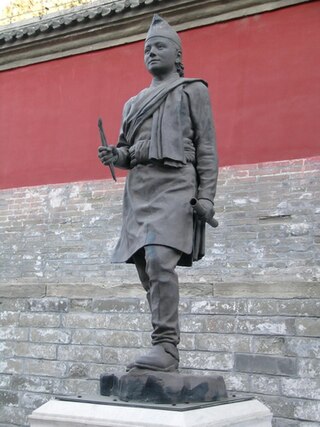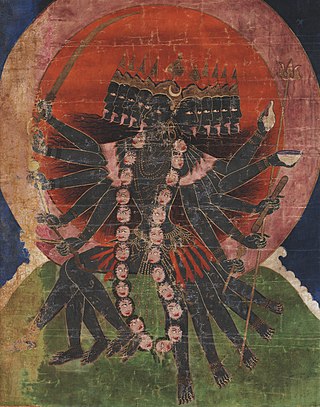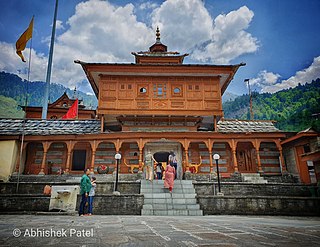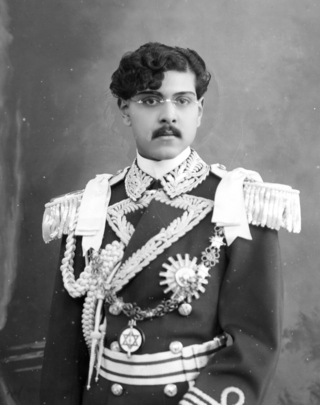Frequent persons on Nepal's street signs
countries
9 names / 95 streets
Mahendra of Nepal
 40
Mahendra Bir Bikram Shah Dev, was the ninth King of Nepal from 13 March 1955 until his death in 1972, which was due to a heart attack, as told in an interview by his personal physician Dr. Mrigendra...
40
Mahendra Bir Bikram Shah Dev, was the ninth King of Nepal from 13 March 1955 until his death in 1972, which was due to a heart attack, as told in an interview by his personal physician Dr. Mrigendra...
Prithvi
 16
Prithvi, also rendered Pṛthvī Mātā, is the Sanskrit name for the earth, as well as the name of a devi (goddess) in Hinduism of the earth and some branches of Buddhism. In the Vedas, her consort is...
16
Prithvi, also rendered Pṛthvī Mātā, is the Sanskrit name for the earth, as well as the name of a devi (goddess) in Hinduism of the earth and some branches of Buddhism. In the Vedas, her consort is...
Araniko
 10
Aniko, Anige or Araniko was one of the key figures in the arts of Nepal and the Yuan dynasty of China, and the artistic exchanges in these areas. He was born in Kathmandu Valley during the reign of...
10
Aniko, Anige or Araniko was one of the key figures in the arts of Nepal and the Yuan dynasty of China, and the artistic exchanges in these areas. He was born in Kathmandu Valley during the reign of...
Mahakali
 6
Mahakali is the Hindu goddess of time and death in the goddess-centric tradition of Shaktism. She is also known as the supreme being in various Tantras and Puranas.
6
Mahakali is the Hindu goddess of time and death in the goddess-centric tradition of Shaktism. She is also known as the supreme being in various Tantras and Puranas.
Bhimakali Temple
 5
BhimaKali Temple is a Hindu temple at Sarahan in Himachal Pradesh in India, dedicated to the mother goddess Bhimakali, presiding deity of the rulers of former Bushahr State. The temple is situated...
5
BhimaKali Temple is a Hindu temple at Sarahan in Himachal Pradesh in India, dedicated to the mother goddess Bhimakali, presiding deity of the rulers of former Bushahr State. The temple is situated...
The Buddha
 5
Siddhartha Gautama, most commonly referred to as the Buddha, was a wandering ascetic and religious teacher who lived in South Asia during the 6th or 5th century BCE and founded Buddhism. According to...
5
Siddhartha Gautama, most commonly referred to as the Buddha, was a wandering ascetic and religious teacher who lived in South Asia during the 6th or 5th century BCE and founded Buddhism. According to...
Murti
 5
In the Hindu tradition, a murti is a devotional image, such as a statue or icon, of a deity or saint used during puja and/or in other customary forms of actively expressing devotion or reverence -...
5
In the Hindu tradition, a murti is a devotional image, such as a statue or icon, of a deity or saint used during puja and/or in other customary forms of actively expressing devotion or reverence -...
Tribhuvan of Nepal
 4
Tribhuvan Bir Bikram Shah, was the eighth King of Nepal. Born in Kathmandu, the capital city of Nepal, he ascended to the throne at the age of five, upon the death of his father, Prithvi Bir Bikram...
4
Tribhuvan Bir Bikram Shah, was the eighth King of Nepal. Born in Kathmandu, the capital city of Nepal, he ascended to the throne at the age of five, upon the death of his father, Prithvi Bir Bikram...
Queen Ratna of Nepal
 4
Ratna Rajya Lakshmi Devi Shah is a member of the Nepalese royal family who was queen consort of Nepal from 1955 to 1972 and queen dowager from 1972 to 2008 when the royal family were stripped of all...
4
Ratna Rajya Lakshmi Devi Shah is a member of the Nepalese royal family who was queen consort of Nepal from 1955 to 1972 and queen dowager from 1972 to 2008 when the royal family were stripped of all...